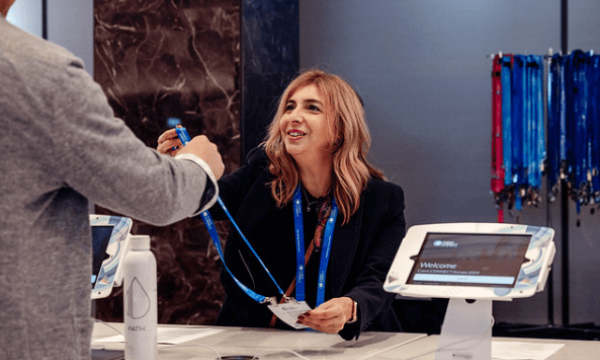Live webinars. Almost all of us can claim to have attended at least one of them in our professional careers. And if you have stumbled on this blog, you might be thinking about flipping the switch and planning one in the near future.
Great idea!
For many businesses, webinars are a tried-and-true marketing strategy that produces fantastic results. A webinar, when done correctly, helps you engage with your present and potential consumers in a way that truly adds value to their lives.
This in-depth guide will explain everything you need to know about creating, promoting, and hosting live webinars. You will learn:
Contents:
What is a live webinar?
A live webinar is an interactive video conferencing that happens in real-time. Companies use live webinars to reach and interact with larger audiences in different regions.
The attendees can see and hear everything happening online and engage with the host through Q&A, live polls, discussions, and other features. Live webinars can include different sections such as panel discussions, interviews, seminars, or demos.
How do live webinars work?
Like an in-person seminar, a live webinar usually comprises a host or a panelist presenting slides for 30-60 minutes. Participants can view a live webinar on their computers or mobile.
However, some webinar hosts permit microphones to talk during the Q&A section. This allows attendees to frequently communicate via chat and messaging, making the session interactive and engaging.
A webinar typically includes 100 registrants and a 40–50% show rate. That means if you have 100 registrants, expect only 40 or 50 attendees to join the session.
Webinars are often free but can be paid for. Free webinars are usually valuable for generating leads, though they can also be used for onboarding or training.
What is the best time to host a live webinar?
The perfect day to host a webinar is Tuesday; 24% of all webinars occur on this day. The other essential days include Monday, with 17% registration followed by Thursday (16%), Wednesday (15%), and Friday (14%).
The most significant spike in webinar sign-ups occurs in the early working hours, 8 am to 11 am. To capitalize on this moment, send your registration emails early and let it be the first email anyone sees as soon as they start work in the morning.
This is the information to keep in mind as you develop your webinar. Further, to ensure that it is a success and with an impressive show rate, make sure you promote and publicize the webinar two to four weeks ahead.
Why? Because about a third of total registrations happen in this time frame.
Studies suggest that about 70% of registrations, the largest registration spike, occur in the last week and on the day of the webinar.
With this in mind, you can work around this time slot as most attendees prefer a live webinar before lunch. The ideal time to maximize your registrants is 11 am.
What are the benefits of live webinars?
Live webinars are significantly more engaging than automated or on-demand ones. It allows hosts and special guests to adjust their presentations in real-time in response to the audience’s demand. Audiences can communicate with hosts through in-built chat features, ask questions, and participate in polls.
Live webinars' interactivity gives hosts a quick feedback loop that lets them know if viewers are interested in their content, product, or services.
Additionally, live webinars can improve the presenters' relatability. It makes attendees feel more connected to presenters because they can witness the action as it is happening.
Here are the top 5 benefits of hosting live webinars.
1. Reach a Larger Audience
Businesses and brands can reach larger audiences through live webinars than by hosting in-person events because live webinars are hosted digitally. Attendees can tune into live webinars from the comfort of their homes or register for them and watch them on demand.
2. Increase Brand Recognition
Because a webinar meeting is more like a conversation than a sales presentation or commercial, it adds context to your brand or product. This helps attendees in developing a deeper understanding of your brand or product.
3. Find New Leads
Webinars provide a quick way to generate a large number of high-quality leads all at once. You can tell your leads are already interested in what you offer because they sign up based on the subject and what they hope to learn from the webinar.
Following up with your new connections and assisting them in taking the next step is what you should do after the webinar.
4. Cost-effective
An inexpensive option to promote a product to several people at once is through a live webinar hosted on a virtual event platform. You must pay a one-time fee for event management software and host as many webinars as you wish. Moreover, the platform's price does not rise as your audience size increases, and the cost per attendee remains relatively low.
5. Earn more money
As more people become familiar with your company or product, they will understand how it will fit into their lives. Webinars generate marketing-qualified leads who are more likely to make purchases, thereby generating more income.
How to host a live webinar?
There are two steps to creating a live webinar: Create a new live webinar and include contributors.
Create a New Live Webinar
A webinar platform allows you to set up as many webinar sessions as you want. As a host, you can change to webinar rooms, set up email cadence, create landing pages and integrate with platforms such as your CRM.
Include Contributors
You might need your team members to moderate a webinar if you expect the webinar to be engaging and interactive. Additionally, at this point, the webinar can be expanded to include special guests from other organizations.
How to promote a live webinar?
Getting the word out about a webinar is as important as hosting a webinar. Unless people don’t know about it, all your hard work might not translate into rewarding results.
For live webinar marketing, you need a landing page and other digital assets such as SEM and social media ad copies and emails. But first things first, create a landing page.
Create a Landing Page
The webinar landing page includes your event description and registration form. The registration form serves as a gate, which doesn’t let registrants access the webinar link unless they submit their information.
The webinar dashboard then stores this information to send confirmation and other automated emails. You can easily modify the design and branding of these emails and landing pages based on your brand guidelines.
Once you have the landing page ready, you can promote it on various digital assets, including:
Social Media
Twitter: When tweeting about your forthcoming webinar, use relevant hashtags. These hashtags must be unique to your webinar.
Meta and LinkedIn: Schedule your promotions on both Facebook (Meta) and LinkedIn. Ensure your promotional material contains powerful, engaging CTAs, persuasive content, and high-quality graphics.
On Facebook, post two different types of updates: first, link updates with a sizable thumbnail, and second, photo updates. You can also share small reels.
Instagram: Leverage Instagram's visual appeal. Look for background photos that are Instagram-friendly to serve as the backdrop for your webinar's title and other important information like the time, the host(s), the participant(s), etc. It should conclude with a persuasive sign-up call that links to your webinar landing page.
You can also promote your webinar on other social media platforms such as YouTube, Reddit, Quora, TikTok, and Pinterest. Whichever platform you choose, keep in mind its best practices and develop your digital assets accordingly.
Emails
Without manually sending email campaigns, organizers can use automated emails to provide critical information to registrants. You can automate the invite, event registration confirmation, reminders, and follow-up emails. Typically, follow-up emails include the presentation slides and the event recording.
Hero Banner and Hello Bar
Use your website’s hero banner or hello bar to draw attention to your website visitors to your webinar.
Learn more about webinar promotion.
How to join a live webinar?
You must register on the webinar's registration page to participate. Once registered, a system-generated email is sent ahead of the webinar’s joining link and its scheduled date and time.
The links are frequently intended solely for personal use; they cannot be shared and are only accessible to individuals who have registered for the webinar. Some webinars are open to everyone and are not gated.
In most cases, a missed-you email containing the webinar recording link will be sent if you are unable to attend the event’s live stream version, and if the live webinar is recorded.
How to automate a live webinar?
You can set up automated webinars in advance, almost as if it was running on autopilot.
When you wish to host an automated webinar that is also live, you can automate the beginning and end time of the webinar and the timing of when videos will play during the webinar.
You can also automate some more actions of a live webinar, including:
Page Redirect: As the name suggests, this instruction redirects your audience to a specific URL at the end of the webinar. The main use of a page redirect is to present sales demos. Once the webinar is over, sales reps can set these pages to guide audiences to their product’s price range or a discount code.
You can also use it for sharing helpful content like ebooks, infographics, etc. For instance, educational institutions can use it to conduct online tests and quizzes for their students.
Send a poll: Polls are an effective way to interact with your audience. You can send polls throughout the webinar to gauge your audience’s opinion on specific topics. The poll information that you gather can be used later on.
Show a presentation: Unlike playing a timed video, you can activate your presentation through a trigger for the audience during the webinar. Some webinar software allow the automation of slides to change seamlessly during a presentation.
Send a CTA: A Call-to-Action (CTA) seeks a response from attendees. Again, these can be automated during decisive moments of the webinar. For instance, you can place a “Buy it now” CTA for the viewers during a webinar when the price of a product or service is.
Get Started
Hosting a live webinar is easier than you think. These live webinar questions intend to clear any confusion you may have about how to host or plan one. Now go start your first live webinar!
Learn more about Webinar Best Practices.






